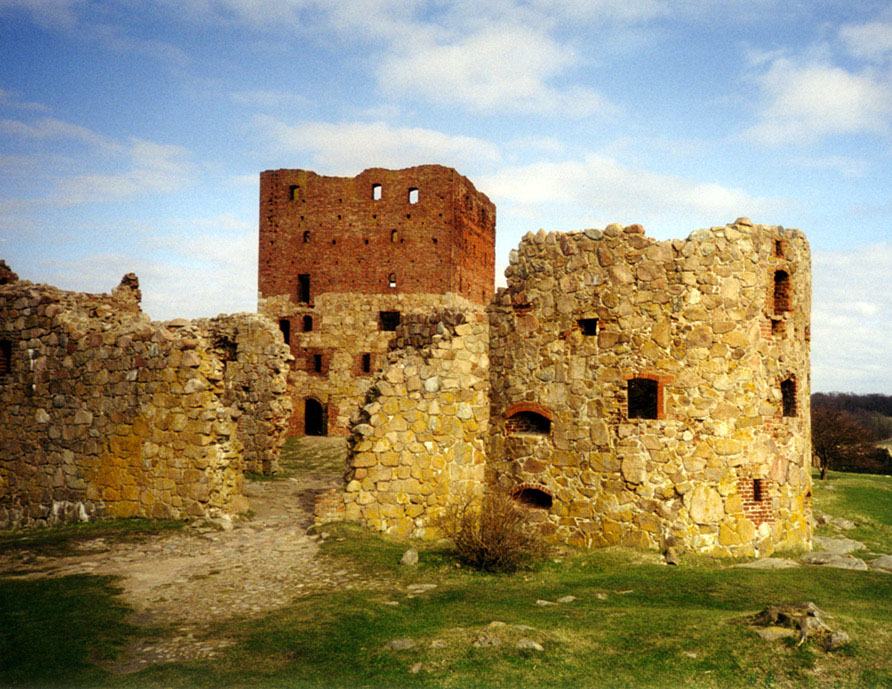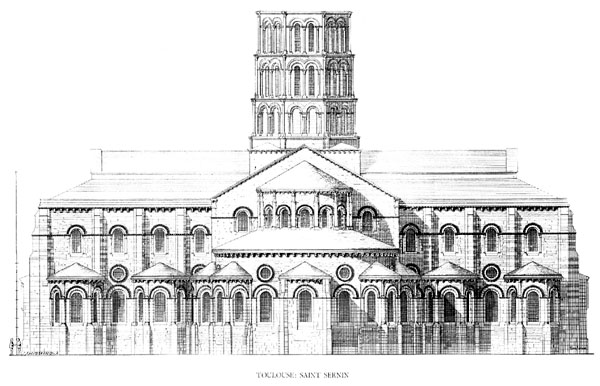|
Aa Church
Aa Church ( da, Aa kirke), located in Aakirkeby on the Danish island of Bornholm, is a Romanesque church dating from the 12th century. It is the parish church of Aaker Parish. History and architecture Aa Church, which literally means "stream church", owes its name to the two streams which run beside it. Dedicated to John the Baptist, it was first known as ''Sankt Hans kirke'' (St John's Church). A gilded figure of St John stood in the church until 1706 but was buried in the churchyard by the priest as it was attracting undue attention from Catholic prisoners during the Great Northern War. ''Aa kirke''. Retrieved 10 July 2012. The church was built in the latter half of the 12th century in several stages. The oldest remaining sections are the choir and |
Aakirkeby
Aakirkeby or Åkirkeby is a town in Denmark with a population of 2,119 (1 January 2022). It is the third largest town on the island of Bornholm in the Baltic Sea. It was the main town of the now abolished Aakirkeby Municipality. The town is situated in the middle of the southern half of Bornholm, between Rønne and Nexø. The Danish TV-station TV2 has a local office (TV2/Bornholm) in Aakirkeby. Aakirkeby could be translated to "Stream Church town", as Å or Aa is a stream. When speaking of the church alone, which dates from the mid-12th century, it is separated into two words: Aa Kirke. Myreagre Mølle Myreagre Mølle (Myreagre Windmill) is a whitewashed tower mill located east of Aakirkeby on the Danish island of Bornholm. Built in 1865, it remained in service until 1970. [...More Info...] [...Related Items...] OR: [Wikipedia] [Google] [Baidu] |
Bornholm
Bornholm () is a Danish island in the Baltic Sea, to the east of the rest of Denmark, south of Sweden, northeast of Germany and north of Poland. Strategically located, Bornholm has been fought over for centuries. It has usually been ruled by Denmark, but also by Sweden and by Lübeck. The ruin of Hammershus, at the northwestern tip of the island, is the largest medieval fortress in northern Europe, testament to the importance of its location. Bornholm and Ertholmene comprise the last remaining Danish territory in Skåneland east of Øresund, having been surrendered to Sweden in 1658, but regained by Denmark in 1660 after a local revolt. The island is known as ("sunshine island") because of its weather and ("rock island") because of its geology, which consists of granite, except along the southern coast. The heat from the summer is stored in the rock formations and the weather is quite warm until October. As a result of the climate, a local variety of the common fig, k ... [...More Info...] [...Related Items...] OR: [Wikipedia] [Google] [Baidu] |
Romanesque Architecture
Romanesque architecture is an architectural style of medieval Europe characterized by semi-circular arches. There is no consensus for the beginning date of the Romanesque style, with proposals ranging from the 6th to the 11th century, this later date being the most commonly held. In the 12th century it developed into the Gothic style, marked by pointed arches. Examples of Romanesque architecture can be found across the continent, making it the first pan-European architectural style since Imperial Roman architecture. The Romanesque style in England and Sicily is traditionally referred to as Norman architecture. Combining features of ancient Roman and Byzantine buildings and other local traditions, Romanesque architecture is known by its massive quality, thick walls, round arches, sturdy pillars, barrel vaults, large towers and decorative arcading. Each building has clearly defined forms, frequently of very regular, symmetrical plan; the overall appearance is one of simpli ... [...More Info...] [...Related Items...] OR: [Wikipedia] [Google] [Baidu] |
John The Baptist
John the Baptist or , , or , ;Wetterau, Bruce. ''World history''. New York: Henry Holt and Company. 1994. syc, ܝܘܿܚܲܢܵܢ ܡܲܥܡܕ݂ܵܢܵܐ, Yoḥanān Maʿmḏānā; he, יוחנן המטביל, Yohanān HaMatbil; la, Ioannes Baptista; cop, ⲓⲱⲁⲛⲛⲏⲥ ⲡⲓⲡⲣⲟⲇⲣⲟⲙⲟⲥ or ; ar, يوحنا المعمدان; myz, ࡉࡅࡄࡀࡍࡀ ࡌࡀࡑࡁࡀࡍࡀ, Iuhana Maṣbana. The name "John" is the Anglicized form, via French, Latin and then Greek, of the Hebrew, "Yochanan", which means "God in Christianity, YHWH is gracious"., group="note" ( – ) was a mission preacher active in the area of Jordan River in the early 1st century AD. He is also known as John the Forerunner in Christianity, John the Immerser in some Baptists, Baptist Christianity, Christian traditions, and John the Baptist in Islam, Prophet Yahya in Islam. He is sometimes alternatively referred to as John the Baptiser. John is mentioned by the History of the Jews in the Roman ... [...More Info...] [...Related Items...] OR: [Wikipedia] [Google] [Baidu] |
Great Northern War
The Great Northern War (1700–1721) was a conflict in which a coalition led by the Tsardom of Russia successfully contested the supremacy of the Swedish Empire in Northern, Central and Eastern Europe. The initial leaders of the anti-Swedish alliance were Peter I of Russia, Frederick IV of Denmark–Norway and Augustus II the Strong of Saxony– Poland–Lithuania. Frederick IV and Augustus II were defeated by Sweden, under Charles XII, and forced out of the alliance in 1700 and 1706 respectively, but rejoined it in 1709 after the defeat of Charles XII at the Battle of Poltava. George I of Great Britain and the Electorate of Hanover joined the coalition in 1714 for Hanover and in 1717 for Britain, and Frederick William I of Brandenburg-Prussia joined it in 1715. Charles XII led the Swedish army. Swedish allies included Holstein-Gottorp, several Polish magnates under Stanislaus I Leszczyński (1704–1710) and Cossacks under the Ukrainian Hetman Ivan Mazepa (1708 ... [...More Info...] [...Related Items...] OR: [Wikipedia] [Google] [Baidu] |
Apse
In architecture, an apse (plural apses; from Latin 'arch, vault' from Ancient Greek 'arch'; sometimes written apsis, plural apsides) is a semicircular recess covered with a hemispherical vault or semi-dome, also known as an '' exedra''. In Byzantine, Romanesque, and Gothic Christian church (including cathedral and abbey) architecture, the term is applied to a semi-circular or polygonal termination of the main building at the liturgical east end (where the altar is), regardless of the shape of the roof, which may be flat, sloping, domed, or hemispherical. Smaller apses are found elsewhere, especially in shrines. Definition An apse is a semicircular recess, often covered with a hemispherical vault. Commonly, the apse of a church, cathedral or basilica is the semicircular or polygonal termination to the choir or sanctuary, or sometimes at the end of an aisle. Smaller apses are sometimes built in other parts of the church, especially for reliquaries or shrines of ... [...More Info...] [...Related Items...] OR: [Wikipedia] [Google] [Baidu] |
Shale
Shale is a fine-grained, clastic sedimentary rock formed from mud that is a mix of flakes of clay minerals (hydrous aluminium phyllosilicates, e.g. kaolin, Al2 Si2 O5( OH)4) and tiny fragments (silt-sized particles) of other minerals, especially quartz and calcite.Blatt, Harvey and Robert J. Tracy (1996) ''Petrology: Igneous, Sedimentary and Metamorphic'', 2nd ed., Freeman, pp. 281–292 Shale is characterized by its tendency to split into thin layers ( laminae) less than one centimeter in thickness. This property is called '' fissility''. Shale is the most common sedimentary rock. The term ''shale'' is sometimes applied more broadly, as essentially a synonym for mudrock, rather than in the more narrow sense of clay-rich fissile mudrock. Texture Shale typically exhibits varying degrees of fissility. Because of the parallel orientation of clay mineral flakes in shale, it breaks into thin layers, often splintery and usually parallel to the otherwise indistinguishable bed ... [...More Info...] [...Related Items...] OR: [Wikipedia] [Google] [Baidu] |
Lilleborg Castle
Lilleborg AS is a major hygiene and cleaning article company in Norway, owned by the Orkla Group. It was established in 1833, and was one of the first companies in Norway to start manufacturing brand name products. It currently operates three factories in Norway, and employs a total working staff of 595. History Originally a family business, established in 1833 on the banks of the Aker river in Oslo, Lilleborg expanded in 1842 to manufacturing hygiene products with the opening of ''"sæbesyderiet"'', the "soap boilery". Here the company's manufacture of soft soap and bathroom soaps took place. In 1897, it became an ''aksjeselskap'', and changed its name to A/S Lilleborg Fabrikker. In the final years of the 19th century, the company was offering a broad range of oils, bathroom, household and soft soaps. It was also the largest company of its sort in Norway, with more than 100 employees on roll. At the end of the 1920s, Lilleborg had developed a close relationship with Denofa, a ... [...More Info...] [...Related Items...] OR: [Wikipedia] [Google] [Baidu] |
Master Sigraf
Sigraf (also Sighraf, Sighrafr, fl. c.1175–1210) was a Romanesque stone sculptor, working on Gotland. He was mainly active as a sculptor of baptismal fonts, but also of reliquaries, carved pillars and reliefs. He was the most productive of several early medieval stone sculptors making baptismal fonts on Gotland. Works Unusually, this early medieval master stone sculptor is known by name since he has signed one of the fonts attributed to him (in Aa Church, on Bornholm island in Denmark) with runes, ''Sighraf Master''. He was active on Gotland island, working in local sandstone and making inscriptions in Old Gutnish. The works of his atelier were exported to several places around the Baltic Sea, and he seems to have been the first sculptor of Romanesque fonts on Gotland to focus mainly on export, possibly because his home market was beginning to become satisfied. He was trained locally and his oeuvre displays similarities with earlier stone sculptors from Gotland, e.g. Semi-By ... [...More Info...] [...Related Items...] OR: [Wikipedia] [Google] [Baidu] |
List Of Churches On Bornholm
This is a list of churches on the island of Bornholm in eastern Denmark. , ''Bornholms Museer''. Retrieved 4 October 2012. The list See also * *References {{reflist |
Churches In Bornholm
Church may refer to: Religion * Church (building), a building for Christian religious activities * Church (congregation), a local congregation of a Christian denomination * Church service, a formalized period of Christian communal worship * Christian denomination, a Christian organization with distinct doctrine and practice * Christian Church, either the collective body of all Christian believers, or early Christianity Places United Kingdom * Church (Liverpool ward), a Liverpool City Council ward * Church (Reading ward), a Reading Borough Council ward * Church (Sefton ward), a Metropolitan Borough of Sefton ward * Church, Lancashire, England United States * Church, Iowa, an unincorporated community * Church Lake, a lake in Minnesota Arts, entertainment, and media * ''Church magazine'', a pastoral theology magazine published by the National Pastoral Life Center Fictional entities * Church (''Red vs. Blue''), a fictional character in the video web series ''Red vs. Blue'' ... [...More Info...] [...Related Items...] OR: [Wikipedia] [Google] [Baidu] |







